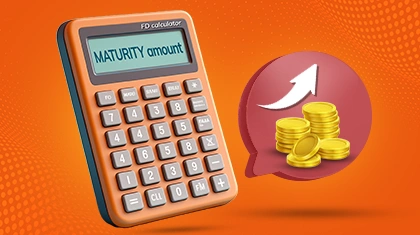THE
ORANGE
HUB
Treasury Bills vs Fixed Deposits: Key Differences Explained

As you embark on your investment journey, making informed choices that align with your finances, future goals and risk tolerance is essential. Two popular investment options are Treasury Bills and Fixed Deposits (FDs). Both offer safety and steady returns but have distinct characteristics catering to different investment needs. Read on to learn more about the key differences between Treasury Bills and FDs, their benefits and factors to consider when making your investment decision.
Understanding Treasury Bills
Treasury Bills also known as the T-Bills are short-term debt instruments issued by the Government to raise funds. These securities have maturities ranging from 91 days to a year.
Benefits of Treasury Bills
Low Risk:
T-Bills are considered one of the safest investment options since they are backed by the Government. They carry minimal default risk, making them attractive for risk-averse investors
Liquidity:
T-Bills are highly liquid instruments, meaning you can easily buy and sell them in the secondary market before maturity. This feature provides flexibility to investors who may need to access their funds quickly
Discounted Purchase
:T-Bills are issued at a discount to their face value and investors earn the difference between the purchase price and the face value as returns.
Evaluating FDs:
Fixed Deposits also known as Term Deposits, are investment options banks and financial institutions offer. Investors deposit a lump sum amount for a predetermined period and the bank pays a fixed interest rate on the principal amount.
Steady Returns:
FDs offer predictable returns, making them ideal for investors seeking stability and regular income
Various Tenures:
FDs come with different tenures, ranging from days to several years, allowing investors to choose the term that aligns with their financial goals.
Lock-in Period:
FDs often come with a lock-in period during which premature withdrawals may attract penalties. This feature encourages disciplined savings.
Comparing Treasury Bills and FDs:
1. Risk Exposure
T-Bills are considered virtually risk-free due to government backing, making them suitable for investors seeking capital preservation. On the other hand, FDs carry no real degree of risk, as they too are insured. It is next to impossible for an FD to not generate returns as it promised.
2. Investment Horizon
T-Bills are short-term instruments, making them suitable for investors with immediate liquidity needs or those looking to park surplus funds temporarily. FDs with longer tenures, are better suited for individuals with specific medium to long-term financial goals.
3. Returns
T-Bills typically offer lower returns than FDs due to their ultra-safe nature. However, they provide assured returns without the risk of fluctuations. FD returns may vary based on the bank's interest rates, tenure and prevailing market conditions.
4. Liquidity
Both T-Bills and FDs offer liquidity. However, T-Bills are more flexible since they can be traded in the secondary market. FDs may have withdrawal restrictions during the lock-in period and early withdrawals might incur penalties.
Factors to Consider When Choosing Between Treasury Bills and FDs:
Income Needs:
Consider whether you need regular income or are comfortable with returns at maturity
Market Conditions:
Monitor prevailing interest rates and market conditions to make an informed choice.
Discounted Purchase
:Bills are issued at a discount to their face value and investors earn the difference between the purchase price and the face value as returns.Consider diversifying your investments across various asset classes to reduce risk and optimise returns
You need to see how much you are willing to invest, what timeframe is suitable and choose the investment option that aligns with your requirements.
Conclusion
It is advisable to carefully evaluate your investment needs and risk appetite before choosing between Treasury Bills and FDs. Both options have their merits and a well-balanced portfolio may include a combination of both investments. By diversifying your investments and staying informed about market dynamics, you can embark on a rewarding investment journey aligned with your financial goals, reducing risk further. Remember, seeking professional advice can also provide valuable insights as you build a robust and sustainable investment strategy.
T&Cs
Scroll to top



